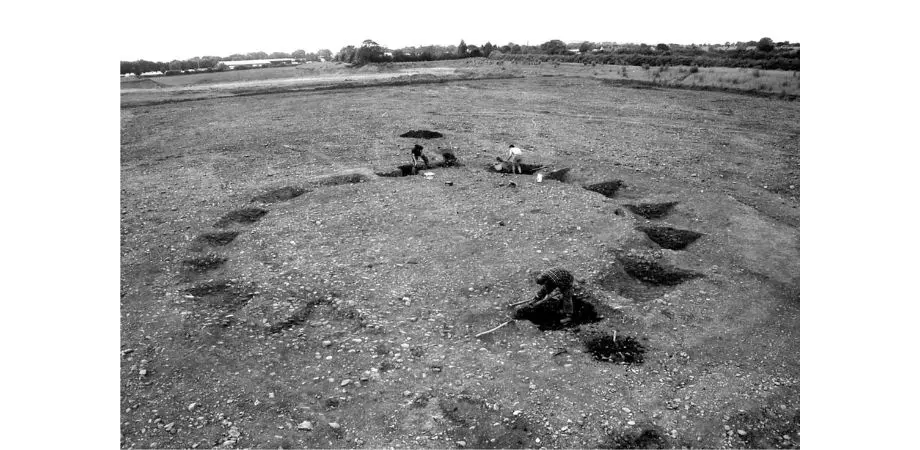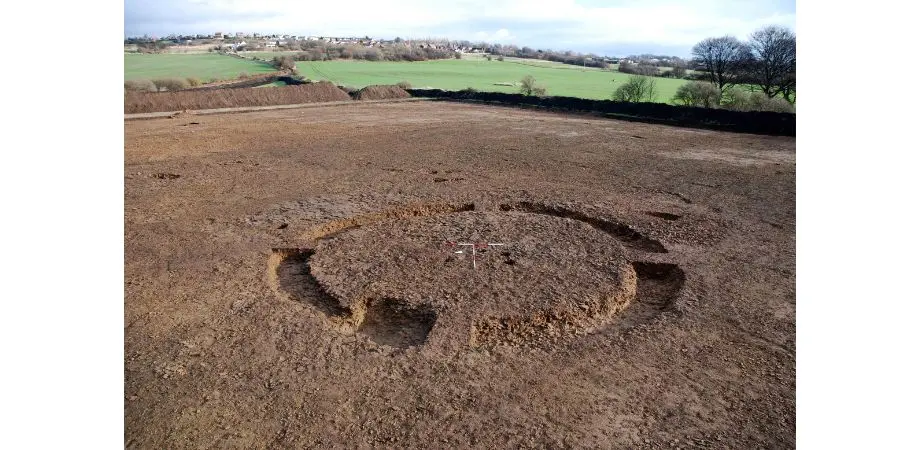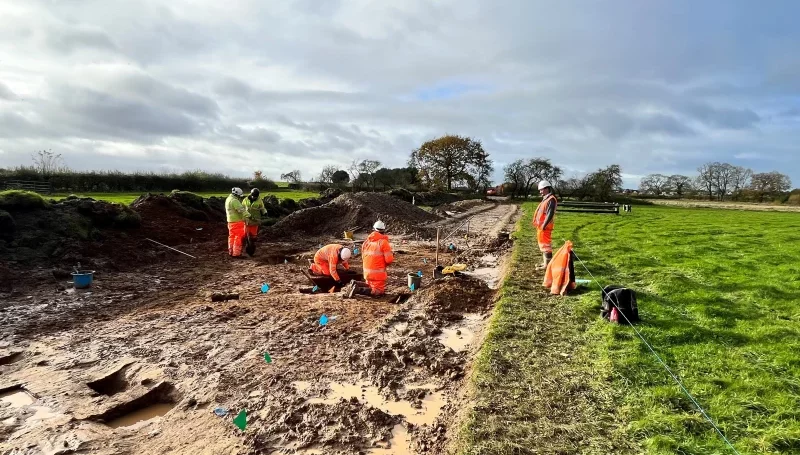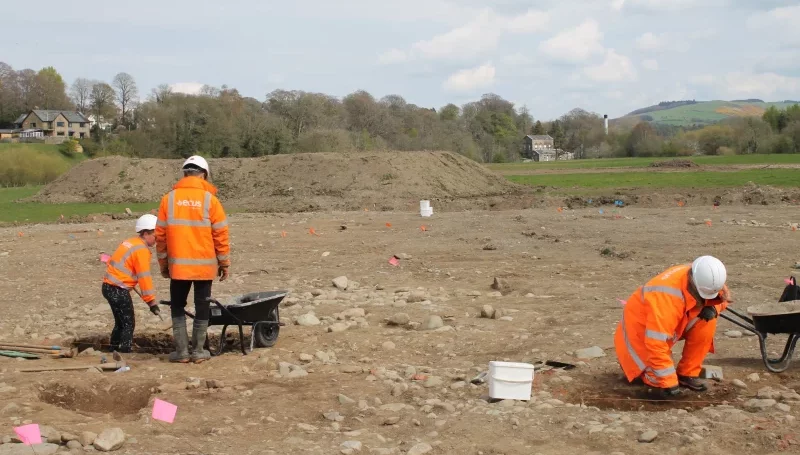Nothing says ‘prehistoric’ to an archaeologist as much as when they spot something round – I’m as guilty as everyone else. The presence of such a feature within the boundaries of any proposed development almost inevitably leads to a requirement for further archaeological investigation. But what are these features, how many of them are really prehistoric, what other periods could they date from and how can we tell them apart? There is a wide overlap in the size and form of different classes of circular ditched monuments, and it is often only by excavation that we can tell them apart. The following article lists a small selection of types of monuments encircled by a ditch or gully, followed by examples that Ecus Archaeology has excavated in recent years, showing the variety that can be found once the big yellow mechanical trowel has scraped off the topsoil. There are many other classes of similar sites such as Roman military installations, medieval and post-medieval windmills and rick-stands (for keeping haystacks dry), 20th-century military sites, etc.
Perhaps the commonest ring-shaped features archaeologists find are formed by the gullies surrounding Bronze Age and Iron Age circular structures (not all of them were necessarily houses). These gullies are presumed to have provided drainage and can vary greatly in diameter from as little as 2–3m to as much as 18–20m, although the most frequent size is approximately 6–12m. They also vary in width and depth (some are surprisingly substantial) and usually have a single entrance gap or causeway where the doorway of the building would have been (penannular), although it is not uncommon for multiple breaks to be present (segmented). The ring-gullies frequently contain domestic waste, such as pottery and animal bones and may surround remains of a circular timber building.

A roundhouse that Ecus Archaeology excavated at Morris Grange near Scotch Corner, North Yorkshire, dated to the Late Iron Age. The penannular ring-gully was 14.5m in diameter and up to 1.2m wide, with an entrance to the east, and it enclosed a smaller circular slot that would have held the walls of the roundhouse.
Another common circular form of monument revealed by a ring-ditch is the round barrow, popular from the Neolithic through the Early Medieval period and hence not easy to date from appearance alone. These sometimes give themselves away by having a surviving earthwork mound in the middle. The ditches are typically continuous rings, but they can also be penannular or segmented, vary greatly in width and depth and range in diameter from as little as c2m to 50m or more, although many are in the 10–20m bracket. They often encircle human burials and may have secondary burials inserted into the ditch fill.
We’ve dug a lot of round barrows over the years. To give just one example, the Early Bronze Age round barrow at Mitchell Laithes Farm near Osset, West Yorkshire, consisted of a rock-cut ring-ditch 13m in diameter, although in places the ditch was only 0.85m wide and 0.32m deep. The ditch surrounded three small pits containing cremated human bone, a small pottery vessel and a bone bead.
Some circular ditched monuments are early prehistoric ritual or ceremonial sites such as henges – some sites refuse to be pigeonholed and acquire a bewildering range of names such as ‘formative henges’ or ‘hengiform enclosures’. ‘Classic’ henges had a bank outside the ditch and either one entrance (penannular) or two on opposite sides of the monument (segmented). However, there were exceptions where the bank was internal (as at Stonehenge), or where there were more breaks in the ditch (also as at Stonehenge). Circular henges vary greatly in size from around 5m to 200m; larger monuments tend not to be circular. They often contain circular settings of timber posts or standing stones, and occasionally pits and human burials.
We found an example of what could be best described as a ‘formative henge’ during improvement works to the A1 road near Catterick, North Yorkshire. It survived as a penannular ditch 20m in diameter with an entrance to the north-east. The ditch contained worked flints and an assemblage of Neolithic Impressed Ware pottery, and radiocarbon dating showed that it dated to the period c.3300–3000 cal. BC.
Perhaps as much as a millennium later, in the Late Neolithic period, a similarly sized feature was created a short distance away at Hollow Banks Farm. This was a ‘classic’ double-entrance henge. Although we didn’t recover any direct dating evidence, it still had relevance in the Early Bronze Age when a cremation burial was placed in a pit in one of the entrances.
Finally, at Ecus Archaeology’s excavation at East Wideopen Farm in North Tyneside, we found something a bit different nestled amongst a series of Iron Age roundhouse gullies. The circular feature initially appeared to be penannular as a result of truncation to one side. The ‘gully’ was 7.5m in diameter, 0.8m wide and filled with cinder. Although of a similar size and form to the surrounding Iron Age features, we know from old maps that this dates from the 19th century and was actually the track inside a horse gin (a horse-powered mill), although no trace of the surrounding building remained.





